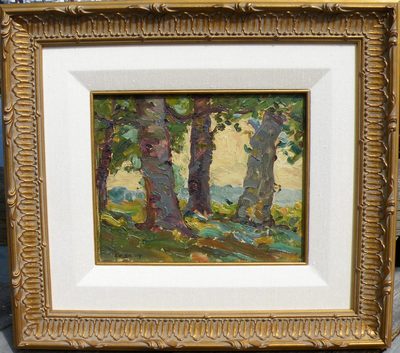Works by this artist

SOLD

SOLD

SOLD
Click image to enlarge
|
John William Beatty 1869 - 1941 |
|
 |
||||||
Price Codes
Currency: Canadian DollarsCode A
Below $1,000
Code B
$1,000 - $2,500
Code C
$2,500 - $5,000
Code D
$5,000 - $10,000
Code E
$10,000 - $20,000
Code F
$20,000 - $30,000
Code G
$30,000 - $50,000
Code H
$50,000 - $75,000
Code I
$75,000 - $999,999
Add to your profile and receive first notice when new works come available.
The Prices paid for all sold works are confidential. For Priceing details please call us at (250) 537-2421.
Beatty served in the Riel Rebellion. He studied at Central Ontario School of Art under J.W.L. Forster. His overall style is realism with a touch of sentiment and his subject matter is that of the Group of Seven, the wilds of the Canadian northland. Beatty also studied at the Academie Julian in Paris. He was a teacher at Ontario College of Art 1912-41. O.S.A. 1901-02, R.C.A. 1913. He was a very good friend of Tom Thompson and J.E.H. MacDonald and when Thompson died MacDonald and he went up to Canoe Lake to build the Cairn to mark the spot where he died.
If you would like additional photos/information or to purchase this item, sell work by this artist or have a question please fill out this form:
 Pegasus Gallery Of Canadian Art: 1-800-668-6131 ~ 250-537-2421 info@pegasusgallery.ca
Pegasus Gallery Of Canadian Art: 1-800-668-6131 ~ 250-537-2421 info@pegasusgallery.ca1-104 Fulford-Ganges Rd. Salt Spring Island, BC, V8K 2S3
Pegasus Framing: 250-931-2122 framing@pegasusgallery.ca
2-111 Robinson Road, Salt Spring Island, BC, V8K 1R6 Canada
2-111 Robinson Road, Salt Spring Island, BC, V8K 1R6 Canada
